Abstract
Salmonella enteritidis PT4 was recovered from fingers following the breaking of intact shell eggs artificially contaminated in the contents with the bacterium. Kitchen utensils used to mix egg dishes were salmonella-positive, sometimes after washing. Following the preparation of batter or the mixing of eggs, S. enteritidis was recovered from work surfaces over 40 cm from the mixing bowl. The bacterium survived well in thin, dry films of either batter or egg and, from an initial level of one cell per cm2, could be recovered from formica work surfaces 24 h after contamination.
Full text
PDF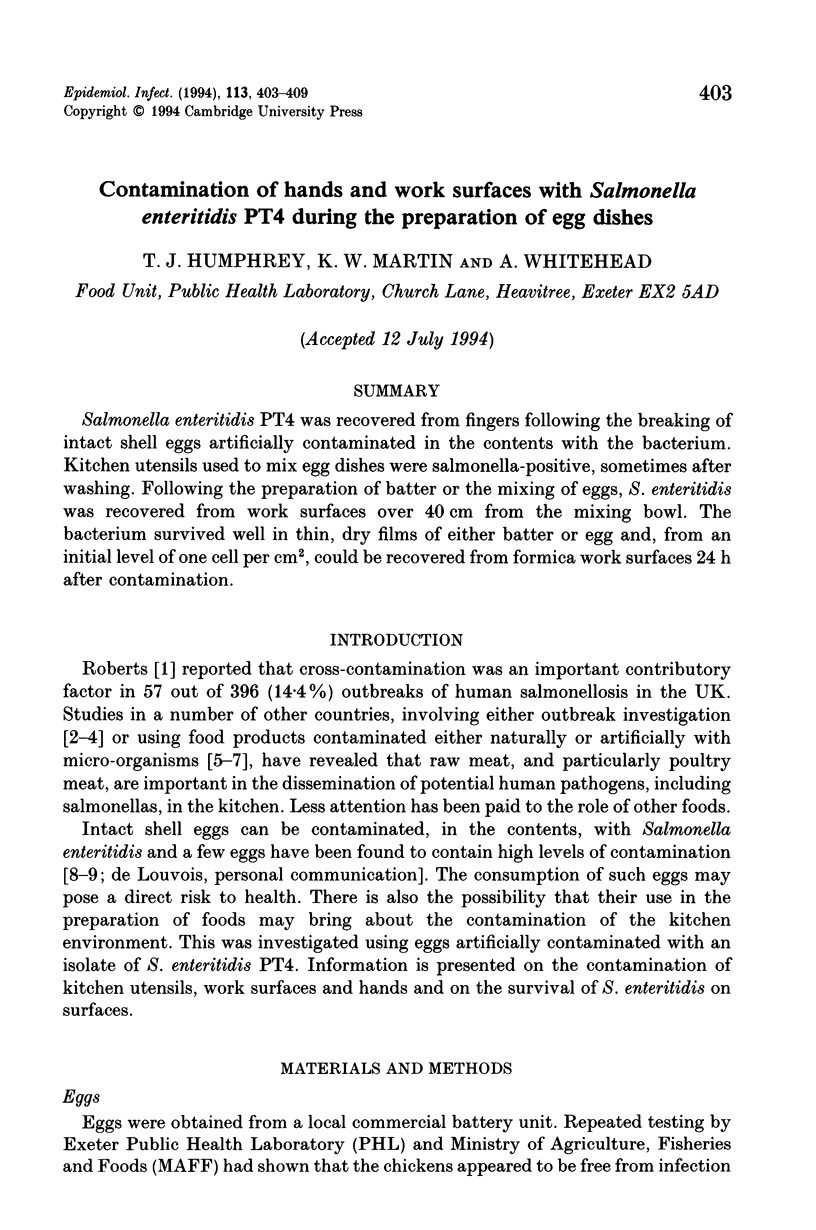
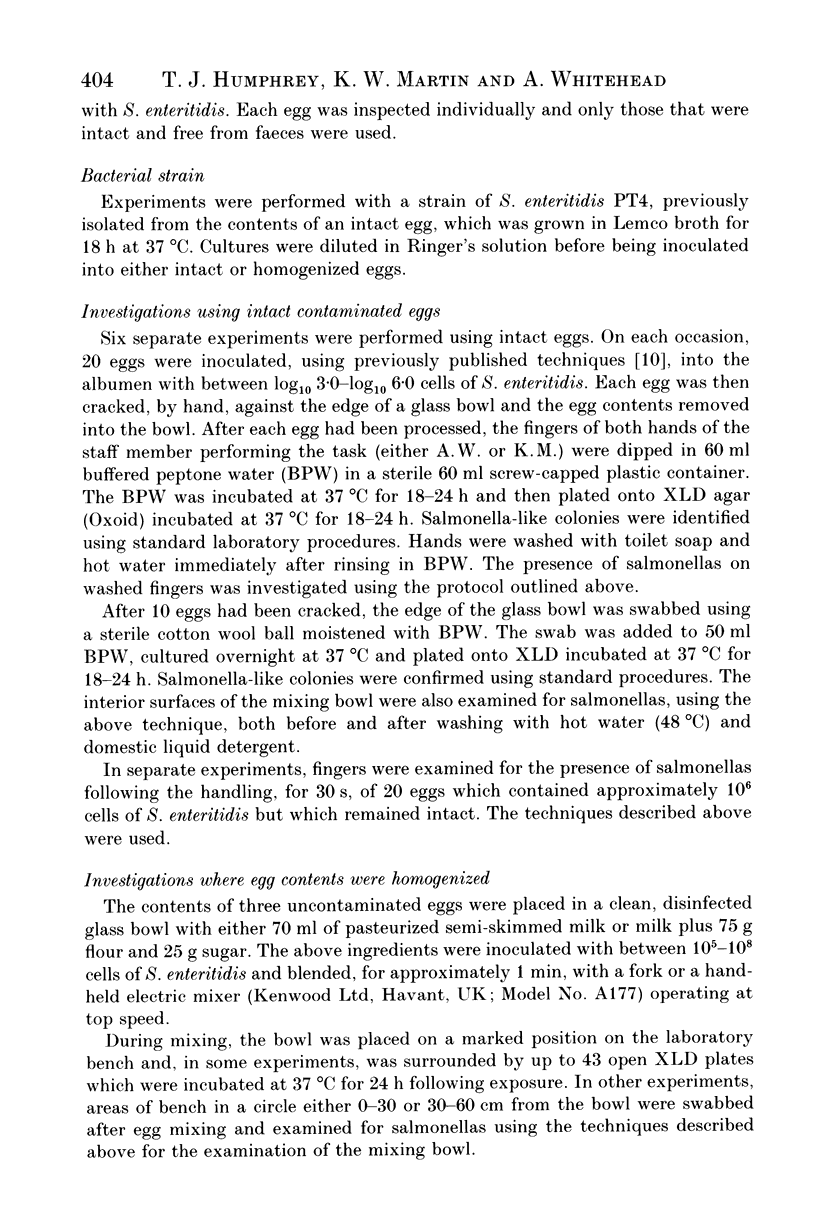
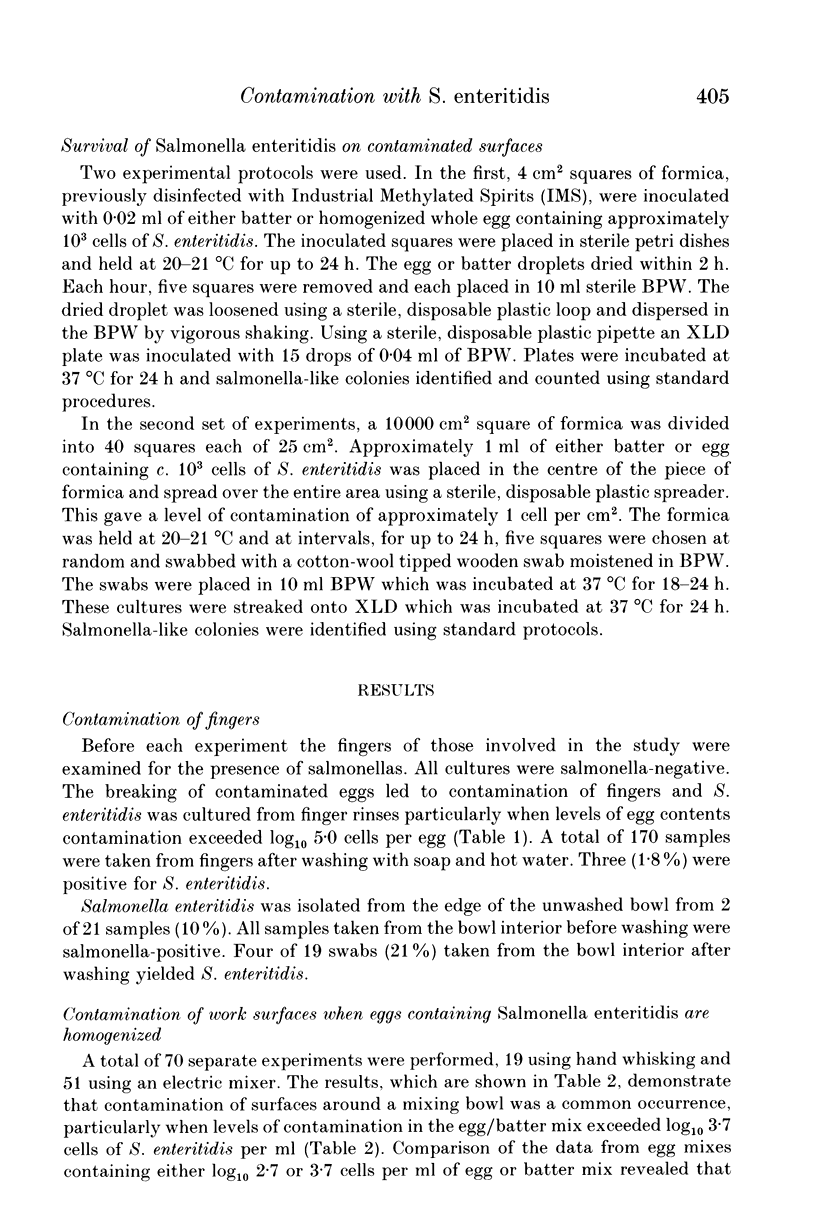
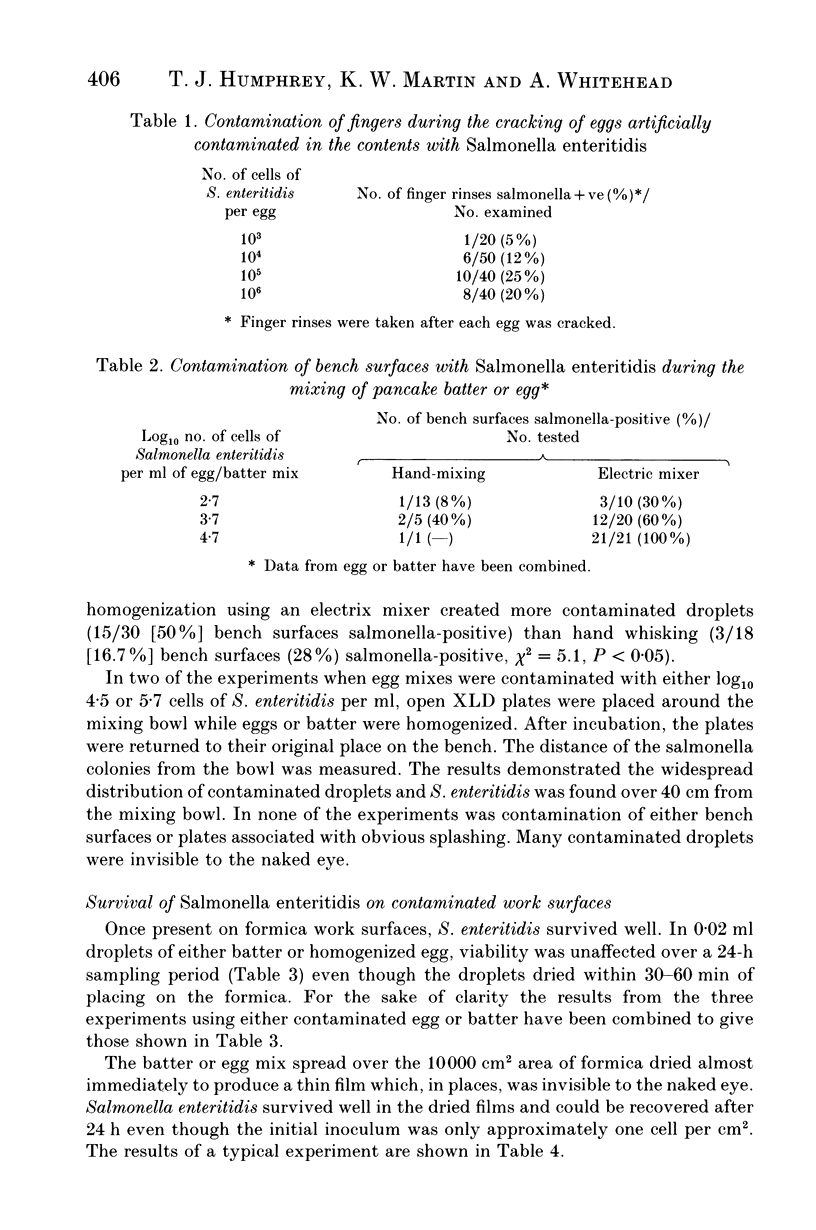

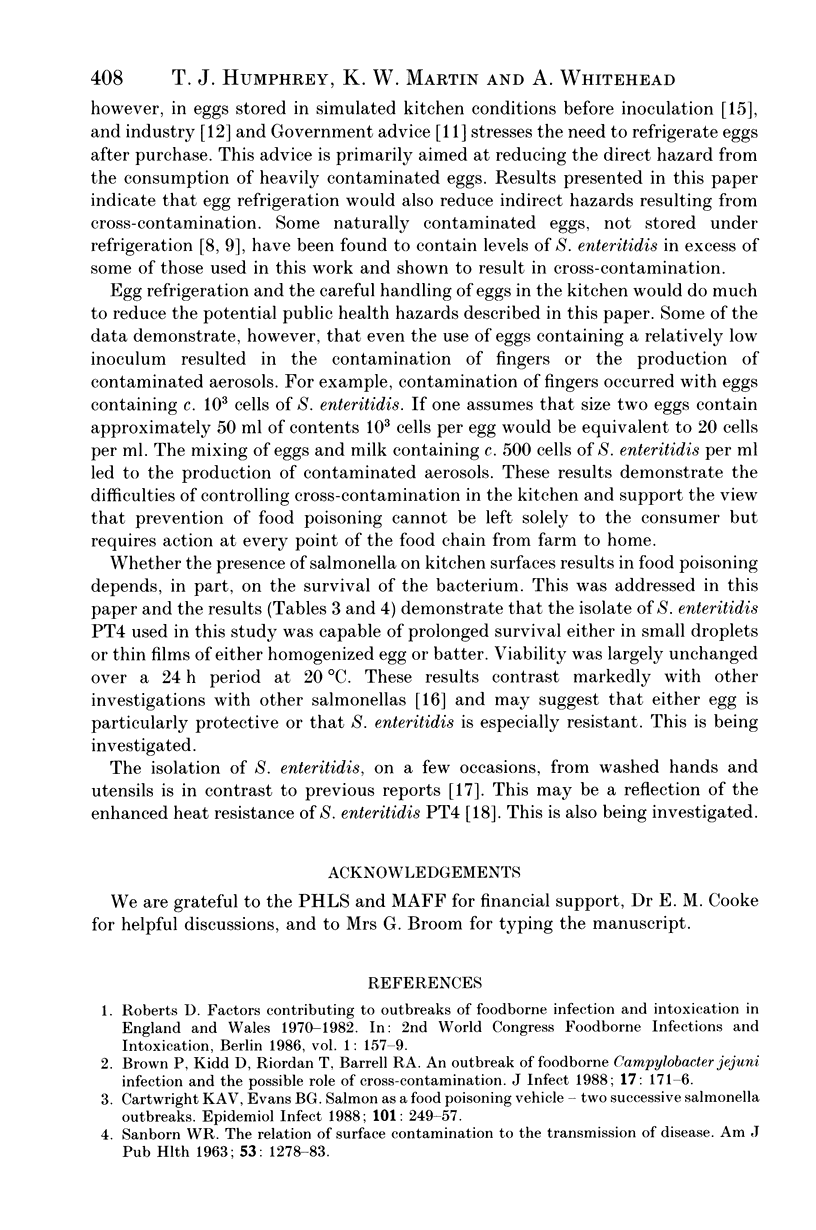
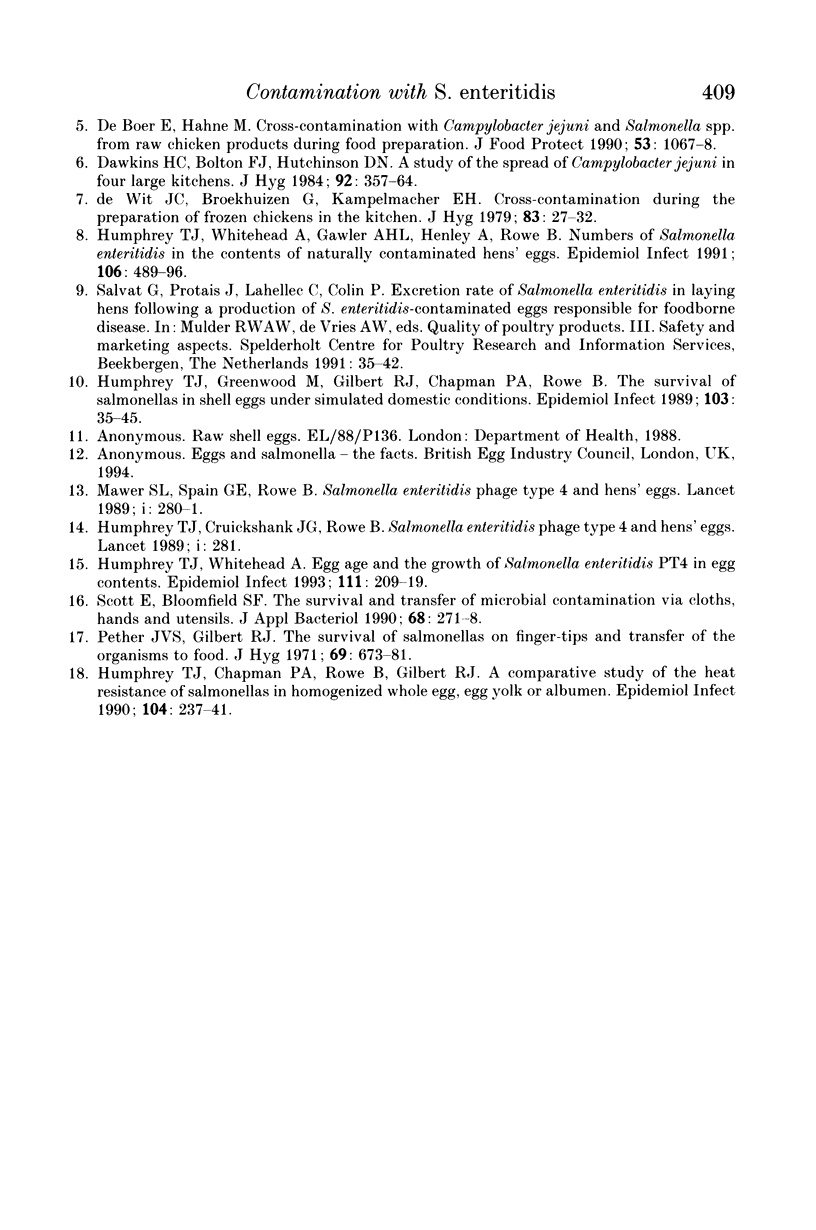
Selected References
These references are in PubMed. This may not be the complete list of references from this article.
- Brown P., Kidd D., Riordan T., Barrell R. A. An outbreak of food-borne Campylobacter jejuni infection and the possible role of cross-contamination. J Infect. 1988 Sep;17(2):171–176. doi: 10.1016/s0163-4453(88)91879-8. [DOI] [PubMed] [Google Scholar]
- Cartwright K. A., Evans B. G. Salmon as a food-poisoning vehicle--two successive Salmonella outbreaks. Epidemiol Infect. 1988 Oct;101(2):249–257. doi: 10.1017/s0950268800054169. [DOI] [PMC free article] [PubMed] [Google Scholar]
- Dawkins H. C., Bolton F. J., Hutchinson D. N. A study of the spread of Campylobacter jejuni in four large kitchens. J Hyg (Lond) 1984 Jun;92(3):357–364. doi: 10.1017/s0022172400064573. [DOI] [PMC free article] [PubMed] [Google Scholar]
- Grannum P. A., Ghidini A., Scioscia A., Copel J. A., Romero R., Hobbins J. C. Assessment of fetal renal reserve in low level obstructive uropathy. Lancet. 1989 Feb 4;1(8632):281–282. doi: 10.1016/s0140-6736(89)91296-8. [DOI] [PubMed] [Google Scholar]
- Humphrey T. J., Chapman P. A., Rowe B., Gilbert R. J. A comparative study of the heat resistance of salmonellas in homogenized whole egg, egg yolk or albumen. Epidemiol Infect. 1990 Apr;104(2):237–241. doi: 10.1017/s0950268800059409. [DOI] [PMC free article] [PubMed] [Google Scholar]
- Humphrey T. J., Greenwood M., Gilbert R. J., Rowe B., Chapman P. A. The survival of salmonellas in shell eggs cooked under simulated domestic conditions. Epidemiol Infect. 1989 Aug;103(1):35–45. doi: 10.1017/s0950268800030338. [DOI] [PMC free article] [PubMed] [Google Scholar]
- Humphrey T. J., Whitehead A. Egg age and the growth of Salmonella enteritidis PT4 in egg contents. Epidemiol Infect. 1993 Oct;111(2):209–219. doi: 10.1017/s0950268800056910. [DOI] [PMC free article] [PubMed] [Google Scholar]
- Humphrey T. J., Whitehead A., Gawler A. H., Henley A., Rowe B. Numbers of Salmonella enteritidis in the contents of naturally contaminated hens' eggs. Epidemiol Infect. 1991 Jun;106(3):489–496. doi: 10.1017/s0950268800067546. [DOI] [PMC free article] [PubMed] [Google Scholar]
- Pether J. V., Gilbert R. J. The survival of salmonellas on finger-tips and transfer of the organisms to foods. J Hyg (Lond) 1971 Dec;69(4):673–681. doi: 10.1017/s002217240002194x. [DOI] [PMC free article] [PubMed] [Google Scholar]
- SANBORN W. R. THE RELATION OF SURFACE CONTAMINATION TO THE TRANSMISSION OF DISEASE. Am J Public Health Nations Health. 1963 Aug;53:1278–1283. doi: 10.2105/ajph.53.8.1278. [DOI] [PMC free article] [PubMed] [Google Scholar]
- Scott E., Bloomfield S. F. The survival and transfer of microbial contamination via cloths, hands and utensils. J Appl Bacteriol. 1990 Mar;68(3):271–278. doi: 10.1111/j.1365-2672.1990.tb02574.x. [DOI] [PubMed] [Google Scholar]
- de Wit J. C., Broekhuizen G., Kampelmacher E. H. Cross-contamination during the preparation of frozen chickens in the kitchen. J Hyg (Lond) 1979 Aug;83(1):27–32. doi: 10.1017/s0022172400025791. [DOI] [PMC free article] [PubMed] [Google Scholar]


